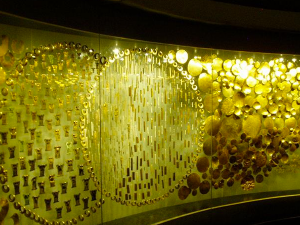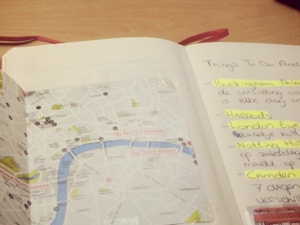
What’s better than a mystery? Well, if anything, surely a mysterious loch-dwelling monster. If you agree then you’ll want to read on to hear about Loch Ness and it’s (in)famous resident. Loch Ness is around 23miles long and is situated in the Scottish Highlands. It’s so large in fact that it contains a larger quantity of freshwater than all of England and Wales’ lakes combined.
But it’s fair to say that Loch Ness is most famous for its purported inhabitant, the Loch Ness Monster. Although the existence has not been scientifically proved, the Loch Ness Monster has been a firm part of traditional lore since around 1933. There’s been countless sightings and even some photographs and interesting sonar readings that have led to an increasing belief in this odd little cryptid.
“Nessie” was originally believed to be long and flexible like a large water snake but the most recent theory is that the Loch Ness Monster is in fact a plesiosaur- a prehistoric marine reptile. The plesiosaurs have large bodies but long snake like necks which seems to fit with lots of sightings.
The most famous photograph that surfaced was the “Surgeons Photograph” in 1934 but was later proven as a hoax yet some people still believe it to be real. Interestingly, the earliest sighting may have even been as early as the 7th Century although it seems highly unlikely.
The Loch’s monster spiked interest when it was spotted by George Spicer and his wife in 1933. When they claimed a “most extraordinary form of animal” crossed the road in front of their car towards the loch. Interestingly, the description that they gave was very similar to that of a plesiosaur.
The plesiosaur theory has lots of contradictions including the fact that plesiosaurs were supposedly cold-blooded (meaning they would need tropical waters) and breathed air (meaning they would need to surface much more frequently). Another contradiction is that plesiosaurs necks are not believed to be strong enough to hold the weight of the head above the water like supposed in sightings. Also plesiosaurs are thought to have died over 65million years ago and yet the Loch Ness was only unfroze around 10,000 years ago.
Other theories of what’s behind the sightings are a seal, an elephant, an overgrown eel, a sturgeon and even, among others, a long-necked newt!
Whatever the truth is we may never know but why not visit the loch yourself and see if you can spot dear Nessie.
We’d love to hear your thoughts and stories on the Loch Ness Monster! Tweet @buytravelmoney and tell us.
Remember, visit MyTravelMoney.co.uk to compare rates and get the best deal when buying holiday money.







